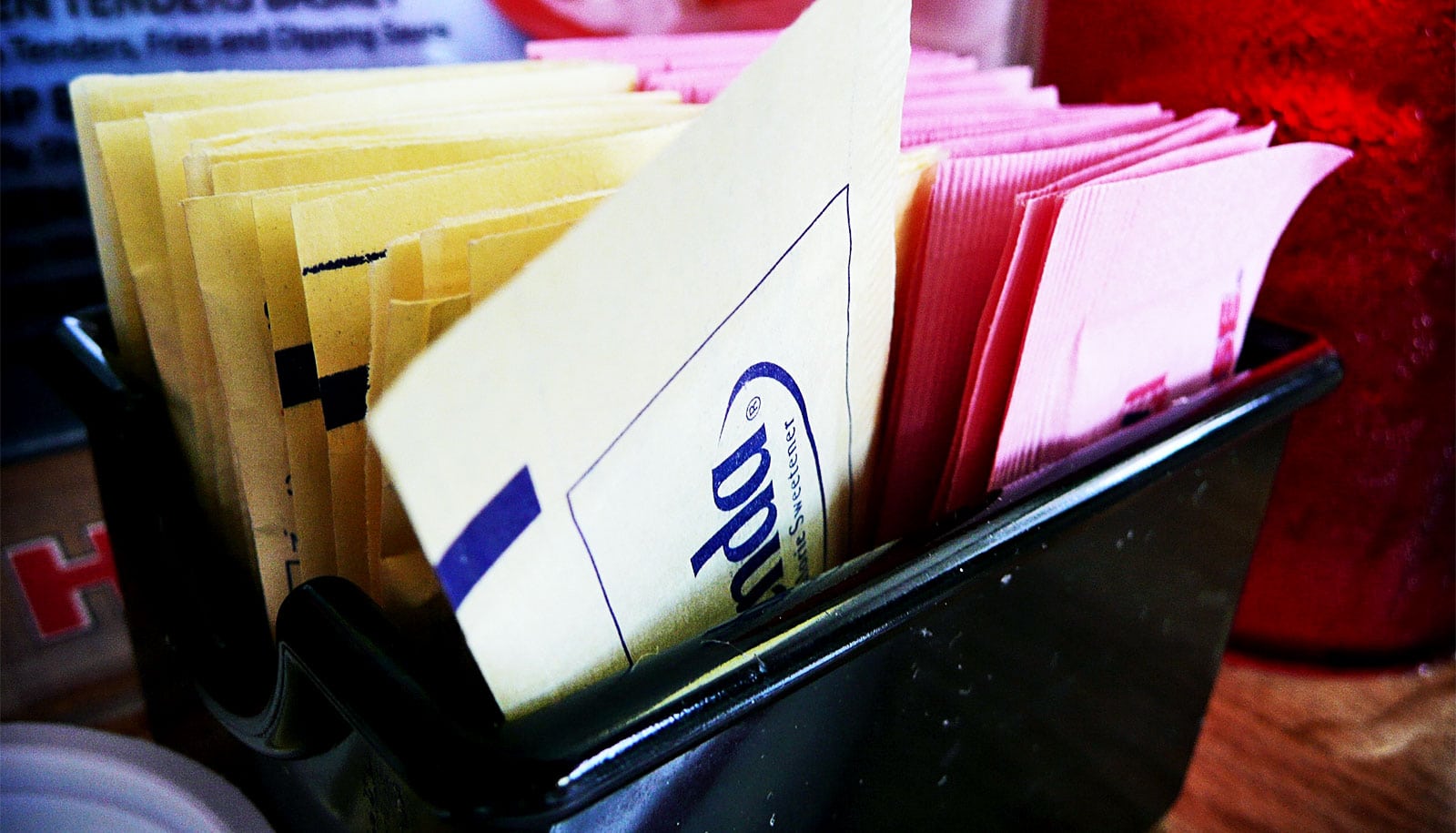A new oral prodrug based on artificial sweetener ingredients delivers carbon monoxide to protect against acute kidney injury, a new study with mice shows.
Although carbon monoxide (CO) gas is toxic in large doses, scientists have discovered it can have beneficial effects by reducing inflammation and protecting cells against injury.
Previous studies have demonstrated the protective effects of CO against injury in the kidneys, lungs, gastrointestinal tract, and liver, among other organs. For the past five years, Binghe Wang, professor of chemistry at Georgia State University, and collaborators have worked to design a safe way to deliver CO to human patients via prodrugs—inactive compounds that must undergo a chemical process in the body before releasing the active pharmacological agent.
The new prodrugs that allow for oral administration of CO use two common artificial sweeteners—saccharine (an ingredient in Sweet’N Low) and acesulfame (an ingredient in Splenda)—as “carrier” molecules. The researchers designed the molecules to release CO in the process of decomposition, which exposure to water triggers.
These are the first examples of orally active, organic CO prodrugs using a benign carrier approved by the Food & Drug Administration with a demonstrated safety profile.
“It’s difficult to deliver a gas, much less a poisonous gas, as a therapeutic to patients, and this work represents a pivotal step forward in developing alternative delivery forms,” says Wang, senior author of the paper in Chemical Science.
“We wanted to work with a carrier that has a very well characterized safety profile, which confers a higher degree of certainty that it will be safe to use in a pill for human consumption.”
Of the two prodrugs, the scientists tested one, CO-306, for pharmacological efficacy against acute kidney damage. The researchers administered CO-306, which uses saccharine as a carrier molecule, to mice and found it reduced biomarkers associated with kidney injury, indicating it could be developed into a viable therapy.
The mouse model mimicked the mechanisms of kidney tissue damage that occur in patients with extensive muscle damage, sickle cell disease, a common type of malaria, cardiopulmonary bypass surgery, and severe sepsis.
The researchers plan to conduct more extensive animal model studies and safety assessments on CO-306 before progressing to human clinical studies. They also plan to test CO-306 for efficacy against other types of organ injuries.
Wang says CO-based therapies particularly hold promise as a method of reducing the likelihood of organ damage during transplantation and improving outcomes for transplant patients.
“Science shows that exposing organs to CO gas can help preserve organs and prevent them from deteriorating during the process of transplantation,” he says. “Now we need to demonstrate that these prodrugs can have a similar effect.”
Additional coauthors are from Vanderbilt University, Harvard Medical School, the University of Mississippi, and Georgia State.
The National Institutes of Health and the Georgia Research Alliance’s Eminent Scholar Endowment funded the work. Wang is working with Georgia State’s Office of Technology Transfer and Commercialization to pursue intellectual property protection for the prodrugs and industry partnerships for further development.
Source: Georgia State University


